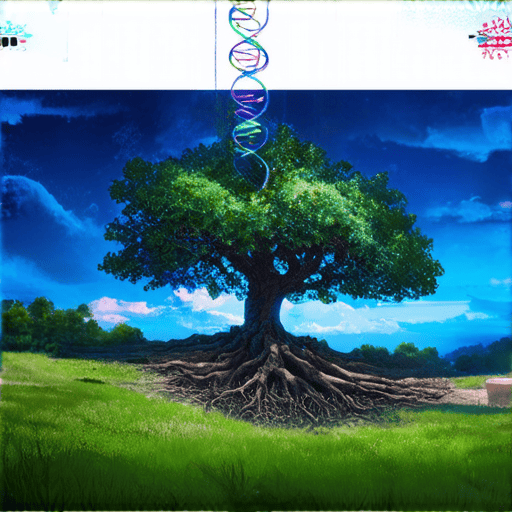For centuries, the relationship between faith and science has been a topic of intense debate and discussion among scholars, theologians, and scientists alike. While some view these two concepts as mutually exclusive, others see them as complementary aspects of human understanding. As we navigate the complexities of modern life, it becomes increasingly clear that the intersection of religion and science holds significant implications for our individual and collective well-being.

Understanding the Relationship Between Faith and Science
As someone who values spiritual growth and religious education, I believe it’s essential to explore the connection between faith and science.
- The Complementary Nature of Faith and Science: While science seeks to understand the workings of creation, faith provides an experience of the creator. Both are limited by human understanding, acknowledging that we can’t fully grasp the universe or its maker.
- Global Ministries Online’s Perspective: As a platform dedicated to spiritual growth and religious education, our mission is to empower individuals in their faith journey by offering insights into global religious practices and deepening understanding of Christian beliefs.
- Exploring Competitors: Other platforms, such as Sojourners, offer valuable perspectives on the intersection of faith and science. Their articles on Christian apologetics, religious freedom, and biblical archaeology demonstrate the importance of exploring these topics.
- Key Takeaways:
- Faith and science are complementary aspects of human understanding.
- Both have limitations due to human constraints.
- Exploring the relationship between faith and science can deepen our understanding of the world and our place in it.
- Navigating the Complexities: As we delve into the relationship between faith and science, it’s crucial to approach the conversation with sensitivity and respect. By doing so, we can foster a deeper understanding of the complexities involved and work towards a more harmonious coexistence.
- Empowering Individuals: At Global Ministries Online, we strive to empower individuals in their faith journey by providing accessible and engaging content. Our platform serves as a resource for those seeking to deepen their understanding of Christianity and its intersections with science and the world around us.
In conclusion, the relationship between faith and science is complex yet fascinating. By embracing the complementary nature of these two aspects of human understanding, we can gain a deeper appreciation for the world and our place within it.
Can Science and Faith Coexist?
As a Christian, I believe that science and faith can indeed coexist in harmony.
- The concept of Non-Overlapping Magisteria (NOMA), proposed by Stephen Jay Gould, suggests that science and religion deal with distinct domains of human experience, allowing them to coexist peacefully.
- This perspective acknowledges that science explores the natural world through empirical evidence and observation, while faith delves into the realm of spirituality and morality.
Understanding the Relationship Between Science and Faith
At Global Ministries Online, we recognize that science and faith are not mutually exclusive, but rather complementary aspects of our existence.
- We believe that the pursuit of scientific knowledge and the exploration of faith are intertwined, as both seek to understand the mysteries of creation and our place within it.
- By embracing this synergy, we can foster a deeper appreciation for the complexities of life and the interconnectedness of all things.
Embracing the Interplay Between Science and Faith
As we navigate the intricate dance between science and faith, it’s essential to acknowledge the contributions of various perspectives:
- Christian apologetics, which seeks to defend and explain the Christian faith in light of scientific discoveries.
- Religious freedom, which ensures that individuals have the right to practice their faith without fear of persecution or restriction.
- Biblical archaeology, which uncovers the historical and cultural contexts of the Bible, shedding light on the origins of Christianity.
In conclusion, science and faith can coexist in harmony, each contributing unique insights and perspectives to our understanding of the world and our place within it.
By embracing this interplay, we can cultivate a richer, more nuanced understanding of ourselves and the universe around us.
For further exploration, visit our website at https://globalministriesonline.com/ to discover more about the intersection of science and faith.

Can Faith and Science Complement Each Other?
As individuals who seek to deepen our understanding of the world and our place in it, we often find ourselves navigating the complex relationship between faith and science.
- We may wonder whether these two seemingly disparate disciplines can coexist harmoniously, or if they are inherently at odds with one another.
- Or perhaps we’re curious about how we can integrate our spiritual beliefs with our scientific knowledge to gain a more complete picture of reality.
In this sense, the question of whether faith and science can complement each other is not just an intellectual curiosity, but a deeply personal and existential inquiry.
The Interplay Between Faith and Science
At its core, the relationship between faith and science is one of mutual respect and appreciation.
- Science seeks to understand the natural world through empirical observation and experimentation, while faith provides a framework for understanding the mysteries of existence and the human condition.
- By acknowledging and respecting the unique contributions of each discipline, we can foster a deeper understanding of the world and our place within it.
This interplay between faith and science is not limited to abstract philosophical debates, but has real-world implications for how we approach various aspects of life.
Examples of Faith and Science in Harmony
There are many examples of how faith and science have come together to advance our understanding of the world and improve our lives.
- The development of modern medicine, which has saved countless lives and improved the health and well-being of millions, is a testament to the power of scientific inquiry and the importance of faith in guiding our values and ethics.
- The study of astronomy and cosmology, which has helped us better understand the origins and evolution of the universe, is another example of how faith and science can work together to reveal the wonders of creation.
Conclusion
In conclusion, the relationship between faith and science is one of harmony and mutual respect.
By embracing the unique contributions of each discipline, we can gain a deeper understanding of the world and our place within it, and cultivate a more nuanced and compassionate worldview.
Ultimately, the question of whether faith and science can complement each other is not just a matter of intellectual curiosity, but a deeply personal and existential inquiry that requires us to engage with the complexities of human experience.

Can Faith and Reason Coexist?
As someone who values both spirituality and intellectual curiosity, I often find myself pondering whether it’s possible to reconcile my faith with my pursuit of scientific knowledge.
- The short answer is yes, faith and reason can indeed coexist.
- In fact, many people have successfully integrated their spiritual beliefs with their understanding of the natural world.
Understanding the Distinction Between Faith and Science
Science and faith are not mutually exclusive, nor do they necessarily conflict with one another.
- Science seeks to understand the workings of the physical universe through empirical evidence and observation.
- Faith, on the other hand, involves a personal commitment to a set of spiritual principles or beliefs.
The Interconnectedness of Faith and Reason
While science and faith may seem like separate domains, they are actually interconnected in profound ways.
- Many scientists have reported experiencing a sense of awe and wonder at the complexity and beauty of the natural world, which can lead to a deeper appreciation for the mysteries of existence.
- Similarly, people of faith often seek to understand the underlying purpose and meaning behind the world around us, which can inform our scientific inquiry and inspire new discoveries.
Examples of Successful Integration
There are countless examples of individuals who have successfully integrated their faith with their scientific pursuits.
- Albert Einstein, a renowned physicist, was deeply influenced by his Jewish heritage and saw his work as a way to understand the harmony between the human experience and the laws of physics.
- Francis Collins, a geneticist and director of the National Institutes of Health, has spoken publicly about how his Christian faith informs his approach to scientific inquiry and his commitment to advancing medical research.
Navigating the Tensions Between Faith and Science
While there may be tensions between faith and science, these can often be resolved through open-minded dialogue and a willingness to learn from one another.
- By acknowledging the limitations of our own perspectives and being receptive to new ideas, we can foster greater understanding and respect between people of faith and those who pursue scientific inquiry.
- Ultimately, the integration of faith and reason requires a willingness to engage in ongoing learning, self-reflection, and exploration – a mindset that can enrich our lives and deepen our connection to the world around us.
Conclusion
In conclusion, faith and reason are not inherently incompatible, and many people have successfully integrated their spiritual beliefs with their pursuit of scientific knowledge.
By recognizing the distinction between faith and science, embracing the interconnectedness of these domains, and navigating the tensions between them, we can cultivate a deeper understanding of ourselves and the world around us.
What Does the Bible Say About Science?
The relationship between science and the Bible has been a topic of discussion among scholars and theologians for centuries.
- The Bible encourages scientific inquiry and exploration, recognizing the inherent value of human curiosity and ingenuity.
- God is described as the Creator and Sustainer of the universe, emphasizing the interconnectedness of all things and the importance of understanding the natural world.
- The Bible contains numerous examples of scientific principles and concepts, such as the laws of physics, the water cycle, and the behavior of animals.
Scientific Principles in the Bible
- The concept of gravity is evident in Psalm 75:3, which describes God as the One who “holds the mountains in place.”
- The water cycle is described in Ecclesiastes 1:7, which notes that “all streams run to the sea, yet the sea is not full.”
- The behavior of animals is observed in Proverbs 30:25, which describes the characteristics of ants and their industrious nature.
Encouragement of Scientific Inquiry
The Bible encourages believers to engage in scientific inquiry and exploration, recognizing the value of human knowledge and discovery.
- Psalm 111:2 commands us to “glorify his name and praise him with music and song.”
- Job 28:12-28 describes the pursuit of wisdom and knowledge, highlighting the importance of scientific inquiry and discovery.
- Colossians 1:16-17 emphasizes the role of creation in revealing God’s glory and majesty.
Conclusion
The Bible and science are not mutually exclusive, but rather complementary aspects of human understanding and exploration.
By embracing scientific inquiry and exploration, we can deepen our understanding of the natural world and recognize the glory and majesty of God.
As Christians, we are called to engage in scientific inquiry and discovery, recognizing the value of human knowledge and the importance of understanding the world around us.

Which Religion is Closest to Science?
Buddhism has been recognized for its compatibility with science, particularly in the realm of psychology and neuroscience.
- The concept of “no-self” in Buddhism aligns with the idea of the brain’s role in shaping our sense of self, which is supported by neuroscientific findings.
- The Buddhist emphasis on mindfulness and meditation has been shown to have positive effects on mental health and well-being, consistent with scientific research on the benefits of mindfulness-based interventions.
In addition to Buddhism, other religions such as Jainism and Taoism also share similarities with scientific principles.
- Jainism’s emphasis on non-violence and compassion towards all living beings resonates with the scientific concept of conservation biology and the importance of preserving biodiversity.
- Taoism’s holistic approach to understanding the world and its interconnectedness reflects the scientific principle of systems thinking and the recognition of complex relationships between components.
While there may not be a single religion that is closest to science, these examples illustrate how various spiritual traditions can complement and inform scientific inquiry.
Key Similarities Between Religions and Science:
- Emphasis on observation and experimentation
- Recognition of the interconnectedness of all things
- Focus on the development of wisdom and knowledge
Conclusion:
Religion and science are not mutually exclusive, and many spiritual traditions share commonalities with scientific principles. By exploring these connections, we can deepen our understanding of the world and foster greater appreciation for the complexities of human experience.

0 Comments